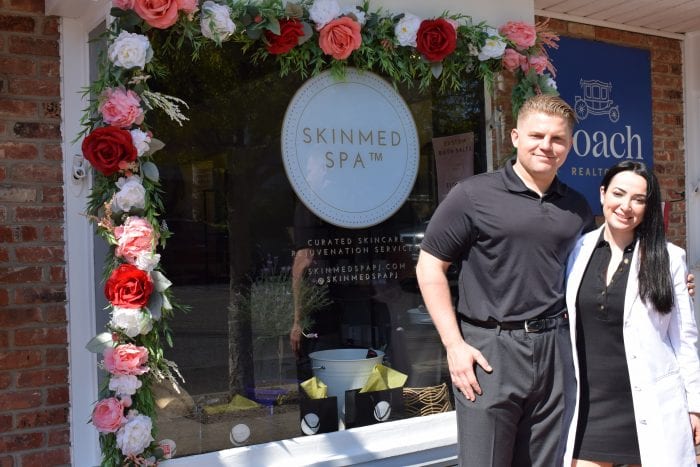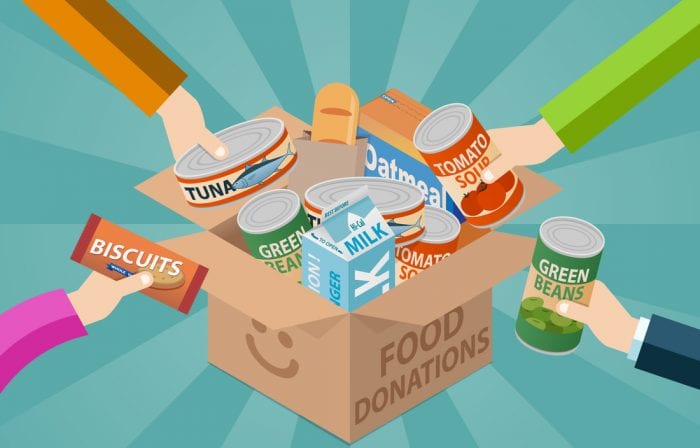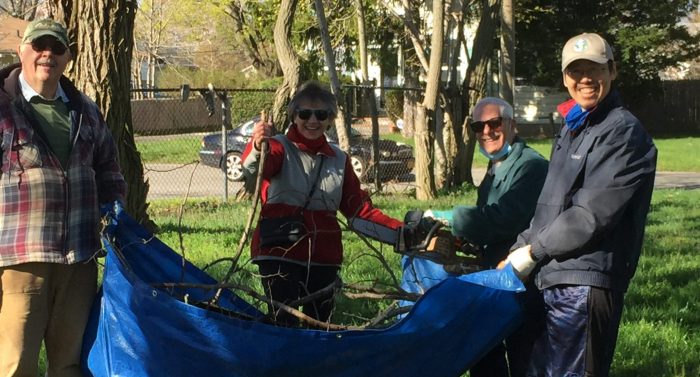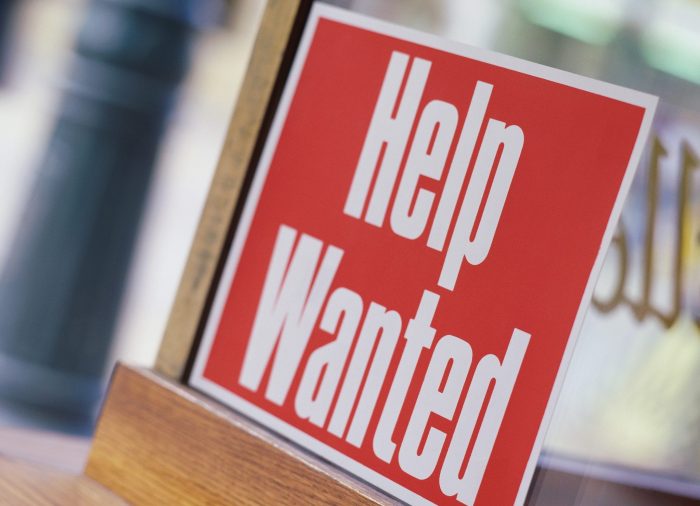Seven reasons to build your dream home here:Waterfront- Breathtaking Views- Estate Setting- Bluff Protection – Security Minded –Walkout Lower Level Grade – Compelling Value.BIG PRICE REDUCTION- DEAL TIME IS HERE – $3,188,000.BEST SIGNIFICANT WATERFRONT VALUE PERHAPS ANYWHERE!BUILDERS: CREATIVE DEAL STRUCTURES CONSIDEREDFor more information click here
Yearly Archives: 2021
Stunning Beachcomber Model In Jamesport!
Luxury Waterfront Home In Hampton Bays!
Sun-Filled and Secluded In Port Jefferson!
Make an environmental impact on Earth Day and every day
Advocate for climate change to help save the planet
Climate change is an issue that impacts everyone, especially children. The impacts can be seen first-hand, as the planet warms, and human fingerprints are all over the consequences: bigger, stronger hurricanes; deadly heat waves; more intense downpours; and devastating wildfires.
In fact, 60% of Americans are concerned about climate change, according to a survey by the Potential Energy Coalition. For many moms, having a child is what made them start to care about climate change in the first place. Eighty-three percent of moms are concerned about climate change and want to do something about it.
 “It’s hard to study climate change and aspects of climate change and be a mother because the data’s very real to you,” said Dr. Emily Fischer, atmospheric chemist and associate professor in the Department of Atmospheric Science at Colorado State University. “We need a massive shift in the way we produce energy within 10 years, the same time period I need to save and plan to send my daughter to college. We’re hoping moms will realize climate change impacts their children and that we have solutions, but we need to act relatively quickly.”
“It’s hard to study climate change and aspects of climate change and be a mother because the data’s very real to you,” said Dr. Emily Fischer, atmospheric chemist and associate professor in the Department of Atmospheric Science at Colorado State University. “We need a massive shift in the way we produce energy within 10 years, the same time period I need to save and plan to send my daughter to college. We’re hoping moms will realize climate change impacts their children and that we have solutions, but we need to act relatively quickly.”
If you’re not sure where to begin, these ideas from the climate scientists at Science Moms can add up to create meaningful solutions.
Learn about climate change. Education is a powerful tool, so learning all you can about climate change is one of the best ways to get involved.
“Sorting through myriad information online can be daunting,” said Dr. Katharine Hayhoe, scientist and professor at Texas Tech University. “That’s why Science Moms was created. This nonpartisan group of leading climate scientists, who are also mothers, aims to break down climate change through simple, engaging content.”
Raise your voice. Leaders have the ability to truly take action on the scale needed to make lasting progress on this challenge, but they need to know that it’s a top priority of individuals. You can add your name to petitions and invite others to do the same, attend local meetings to voice your support for reducing carbon pollution and clean energy projects and meet with elected leaders to ensure they know you stand behind them. Of all the actions you can take, one of the most powerful is telling your representatives this is an issue you care about.
“By investing in a clean energy future and common-sense solutions that keep families and communities safe, government leaders have the ability to enact policies that escalate on a scale we could never achieve alone,” Hayhoe said. “They all need to know we stand behind their decisions to tackle this issue.”
Talk about it. In order to avoid some of the worst impacts of climate change, fast action is needed. Share what you learn with your neighbors and other parents to help make everyone more aware of the issue. Also remember that environmental concerns aren’t just for adults. Oftentimes, concern for the climate comes from children. Talking with your kids about the importance of good stewardship and empowering them to make a difference can affect how the next generation approaches concerns like climate change and pollution.
Make climate-conscious choices. There are nearly countless examples of smaller actions you can take to adapt your own home and life. Options to consider include switching to electric cars, buying green electricity (now available in 24 states), putting solar panels on your roof, insulating your house or adding more plant-based foods to your diet.
Businesses are taking action: As part of an effort to positively impact environmental change, many consumers care about the effect their shopping decisions may have on the world around them. As a way to aid in that mission, ALDI, which has never offered single-use plastic shopping bags, is aiming to make 100 percent of its private-label product packaging reusable, recyclable or compostable by 2025. See video below:
SkinMed Spa brings healthy skin to Port Jeff
A new spa has opened up Down Port, but it’s different than the rest.
Lauren Brown, a village resident and registered cosmetic nurse, decided during the COVID-19 pandemic that she wanted to own her own space.
“I’ve always wanted to do something like this,” she said. “The pandemic just got me reevaluating life and seeing what really matters and where my passions are.”
With her husband, Bill, on board to help, Brown officially took over the former Max & Millie storefront at 142 E Main Street in February. She said it felt like destiny.
In the industry for eight years, Brown has worked for dermatologists and plastic surgeons. While in those offices, she noticed that patients were tired of taking medications, antibiotics and putting chemicals into their skins.
“I thought about it and there are so many great, all-natural treatments out there and other things that we can do instead of always loading ourselves up with medicine,” she said.
So that’s when she got to work.
After finding the space in January, and signing the lease a month later, she and her husband completely revamped inside the former clothing boutique that closed in December.
“I’ve noticed that a lot of the businesses that do really well around here are many of these holistic businesses, because people are looking for more natural treatments to take care of their skin,” she said.
SkinMed Spa offers all the things that a typical spa doesn’t bring to the table.
“We are a place that offers all-natural rejuvenation services that are really targeting conditions of the hair, skin and nails,” Brown said.

Some treatments are for thinning hair, hair loss, acne and its scars, facial rejuvenation for fine lines and the breakdown of collagen. Brown said that SkinMed Spa is a place where troublesome issues can be fixed.
“If you actually have something going on in your skin, or you’re trying to maintain your skin to keep it up, this is the place for you,” she said. “I just wanted to offer a very calming and relaxing environment where people could just come and look around and even ask questions.”
Brown said her spa is a place where there is no judgement. Part of her store is an apothecary where she will sell affordable skin products that won’t break the bank.
“We sell affordable skincare products that are all natural that don’t have any dyes, sulfates or chemicals in them,” she said. “And customers can actually sit down with someone who knows about skin, and that I can help guide them in the right place to help treat some of these conditions.”
SkinMed Spa officially opened its doors on April 1 and since then, Brown has already gotten dozens of happy clients.
“What I’ve noticed over the last two weeks is everyone that I’ve been treating — within 24 hours — their relative or best friend is booking a treatment which honestly makes me feel over the moon,” she said. “I’m not just trying to do a facial treatment. I really wanted to have people’s skin be transformed and be happy with it.”
Bill said the services his wife offers are medical grade.
“You’re getting that kind of quality without going to a doctor’s office,” he said. “You’re getting real quality service in a more boutique kind of fashion.”
Some of the services include micro needling, which helps regenerate cells, plasma lifts, microdermabrasion, dermaplane, jet peels and no-needle lip plumping with hyaluronic acid.
“I wanted it to be almost like when you’re walking in the city, and you find like a really cool, swanky place,” she said.
But without the price tag. Brown said the services offered are a fraction of the cost compared to a doctor’s office.
“I wanted to be different where people could escape and you could think about yourself for a little bit,” she said. “How many how often do we put ourselves first? This is a place where you can relax, you can turn everything off, focus on yourself for a good hour, and go home with some stuff that makes you feel happy without spending a ton of money.”
SkinMed Spa is taking appointments online. To book, visit skinmedspapj.com.
“If it’s not the right service for you, we’ll talk about it,” Brown said. “It’s not we’re not going to just do something if it’s not right for your skin.”
Theatre Three to hold food drive on April 24
Theatre Three Food Drive
Theatre Three, 412 Main St., Port Jefferson will hold a Theatre Three Cares food and personal care items drive to benefit the Open Cupboard food pantry at Infant Jesus Church on Saturday, April 24 from 9 a.m. to 1 p.m. Please help those in need. The following items are in low supply and greatly appreciated:
FOOD ITEMS: Apple Juice, Peanut Butter, Jelly, Coffee, Sugar, Flour, Maseca Corn Flour, Mustard, Mayonnaise, Ketchup, Cooking Oil, Oatmeal, Pancake Mix, Pancake Syrup, Canned Spinach, Canned Chopped Tomatoes, White and Brown Rice (1# and 2# bags/boxes), Canned Fruit, Ramen Noodles, Healthy Snacks, Fresh Chicken, Fresh Ground Beef, Hot Dogs, Eggs, Bread and Butter
TOILETRIES: Shampoo, Conditioner, Soap, Deodorant, Toothbrushes, Toothpaste, Feminine Pads, Toilet Paper, and Razors
BABY ITEMS: Diapers Size 4 & 5, Pull Ups Size 4T-5T, Baby Shampoo, Baby Wash, Baby Wipes, Baby Powder, Desitin and Lotion
We are also accepting donations of grocery store gift cards and cash to purchase whatever else is needed.
Donations will be collected in the back of the theater on the south side of the building. They are also accepting donations of grocery store gift cards and cash to purchase whatever else is needed. If you prefer, you can remain in your vehicle for a contact-free drop off. For more information, call Brian at 631-938-6464.
Editorial: Volunteers clean up
Volunteerism — to some degree — still exists. When it comes to Earth Day and protecting our environment, this is a wonderful thing.
Two weeks ago, on our editorial page, we mentioned the increase in roadside litter along our towns’ roads and the importance of keeping garbage off the streets. In that editorial, we made a small mention of the groups that volunteer to clean up in our areas, but they deserve more than a sentence or two.
With Earth Day celebrated April 22, residents may have seen people out this past weekend with bags, gloves and trash pickers along roads, in parks and on beaches collecting the garbage of others.
On Saturday, the Lake Ronkonkoma Improvement Group hosted a cleanup in conjunction with Suffolk County at Larry’s Landing, and Three Village Community Trust members along with the Friends of the Greenway could be found along the Setauket-Port Jefferson Station Greenway Trail.
Hometown Hope, a Port Jefferson nonprofit, gathered volunteers Sunday to clean up the beaches in the village. Dozens of people helped pick up trash along the four-and-a-half-mile shoreline. These are just a few of the cleanups that occur on our roads, trails and beaches throughout the year.
These volunteers deserve a standing ovation for helping to improve our environment and restoring a sense of pride to our communities.
We would love to see cleanups like this happen more often throughout the year. While it’s the responsibility of individuals to treat the outdoors as they would their own living room or car, unfortunately many don’t follow this common-sense rule.
Groups like the ones mentioned above have the ability to organize people and get things done and pick up where towns leave off — even though we would like to see highway departments out cleaning more, too.
Sadly, many organizations are in desperate need of volunteers. As more residents commute to the city or work two jobs, many civic associations, advocacy groups, nonprofits and even fire departments have seen a decrease in the number of people volunteering.
Yet so many groups just ask for a bit of time to help make our neighborhoods better places to live. One individual giving up an hour here and there to help others causes a ripple effect. It could influence many to do the same and create a wave of community engagement.
That wave is evident in these cleanups as not only a spot of land becomes cleaner but, in the long run, it helps our foliage and wildlife thrive and keeps our waterways clean.
So, thank you to all of you who took the time out of your busy weekends to make our little space on Earth a bit cleaner.
D. None of the Above: Pondering the end of our family’s Little League era
By Daniel Dunaief

About 16 years ago, I stood on the warning track and held my then one-year old son high in my arms above the blue, outfield fence in right center field of the old Yankee Stadium. We asked him to extend his glove as if he had leapt in the air to catch a home run.
Now, as he prepares to graduate from high school, my wife and I are pondering the end of an era filled with the numerous triumphs and challenges of youth sports.
In the last few weeks, while we have awaited the time outs, batting glove adjustments, pauses to look for signs from the catcher, and warm up tosses by each pitcher, we have been replaying our own montage from his years on a baseball field.
A few years after his Yankee Stadium debut, our son donned a baggy uniform that hung from his slight four-year old frame, standing with his left arm out, hoping to catch a ball I tossed with a slight arc toward him.
As the years advanced, his skill set and intensity for the game grew more rapidly than the developmental rules of the sport.
Station-to-station baseball was an abomination for him. When he was six, he caught a ball at shortstop, tagged the runner jogging from second and stepped on third for, what he considered, an unassisted triple play. He tossed the ball to the mound and jogged off the field, only to hear that everyone hadn’t batted so he had to stay on the field. I can still see the disappointed look on his face as all the runners moved to the next base.
Every moment wasn’t athletic heaven. He struggled to find the strike zone when he was pitching, swung and missed at pitches he knew he could hit and suffered through the inconsistent coaching and advice of everyone from his father to the parents of his teammates to semi-professionals eager to give back to the community.
Despite playing a game of failure, he continued to venture to fields close and far for another opportunity to compete, get some exercise and join teammates who have become long-time friends.
He learned how to pick up his friends after their moment in the spotlight didn’t end the way they wanted.
He took us to places way off a tour guide’s map of the eastern United States, as we drove from single traffic-light towns, with their one gas station and one diner, all the way up to Cooperstown.
We paced along frigid sidelines, hoping darkness or snow would grant us a reprieve from frozen bleachers and numb toes. We drove on roads in which the car thermometer read 113 degrees.
When he was old enough, he stood on a 90-foot diamond, looking from third to first as if he needed binoculars to see his teammate and a strong wind to help his throw reach the target.
As he got taller and stronger, the distance became more manageable.
As parents, we made our share of errors on the sidelines and in the stands. While we told him it was the effort that mattered, not the result, he could see the joy in our faces after a win and the slumped shoulders after a tough loss.
While he’ll undoubtedly play other games down the road, that road won’t be as close as the ones we’ve traveled together.
In a recent game, our son raced back and caught a ball against the wall, in a place on the field similar to the one where he extended his tiny glove at Yankee Stadium. We have shared such a long and inspired journey between those two mirrored moments.
Between You and Me: Labor shortages and high unemployment — what gives?
By Leah Dunaief

Why, if there are 9,700,000 Americans looking for work now, some six percent of our population, are there so many signs outside businesses seeking helpers? Granted, many of those signs are in front of restaurants looking for waiters and shops needing salespeople, service industries in the main, but why the disconnect? And this is not just a regional problem but one in large cities like New York, villages like ours, as discussed at a recent local chamber of commerce meeting, and even rural communities.
The situation could have some unwelcome consequences as the economy tries to recover. “It could act as a brake on growth and cause unnecessary business failures, long lines at remaining businesses and rising prices,” according to an article in last Saturday’s The New York Times, entitled “Businesses Challenged to Fill Jobs.”
The story, written by Neil Irwin, goes on to offer some possible answers. First is the suggestion that benefits are too generous. “The government is making it easy for people to stay home and get paid. You can’t really blame them much. But it means we have hours to fill and no one who wants to work.” That’s a quote from a pub owner in upstate Baldwinsville, New York, that appeared in the Syracuse Post-Standard and was reprinted in the NYT.
Some people can make as much or more, thanks to the expanded weekly unemployment payments and the various stimulus cash that has been delivered by the government, at least for awhile. With the reawakening of restaurants and services now, there are more jobs than applicants, which doesn’t drive workers to seek work, compared to the opposite, when the pandemic first hit and jobs were disappearing. The recipients of the cash are doing what economists hoped they would do: spending it. That encourages businesses to reopen, but without enough help. Hence the problem. But it may cure itself when expanded benefits run out in September.
There are other reasons workers may not be inclined to rush back into the workforce. Some, especially those with public-facing jobs, may be afraid of getting sick themselves or perhaps bringing the virus home to vulnerable family members. There does seem to be a relationship between vaccinations of people and a rise in their employment rate, according to the NYT. Researchers have found that a “10-percentage-point increase in those fully vaccinated results in a 1.1 percentage-point increase in their employment.” It would make sense that vaccinated people are more comfortable serving the public.
Here is another possible explanation for the labor shortage. Some of the workers are still needed at home, especially women who might be caring for children, some taking classes remotely, or elderly members of their family. The Times goes on to quote a survey indicating that 6,300,000 million people “were not working because of a need to care for a child not in a school or day care center; and a further 2,100,000 were caring for an older person.” Many of those people, especially women, have disappeared from the rolls of the unemployed and are not even counted any longer. The answer here, as in everywhere else, is in conquering the virus and establishing herd immunity so schools and day care centers can open.
For those businesses that have thrived during the pandemic and have been able to raise the wages they pay workers, like Amazon or construction companies, there is less of a supply problem. But those businesses take away potential workers from industries like restaurants, with thin profit margins. And those workers may not return if they have found better berths for themselves elsewhere.
These issues will sort themselves out eventually, as public health improves and supply-and-demand comes to equilibrium. But one thing is certain. The return to any sort of “normal” will not happen without bumps in the road.















